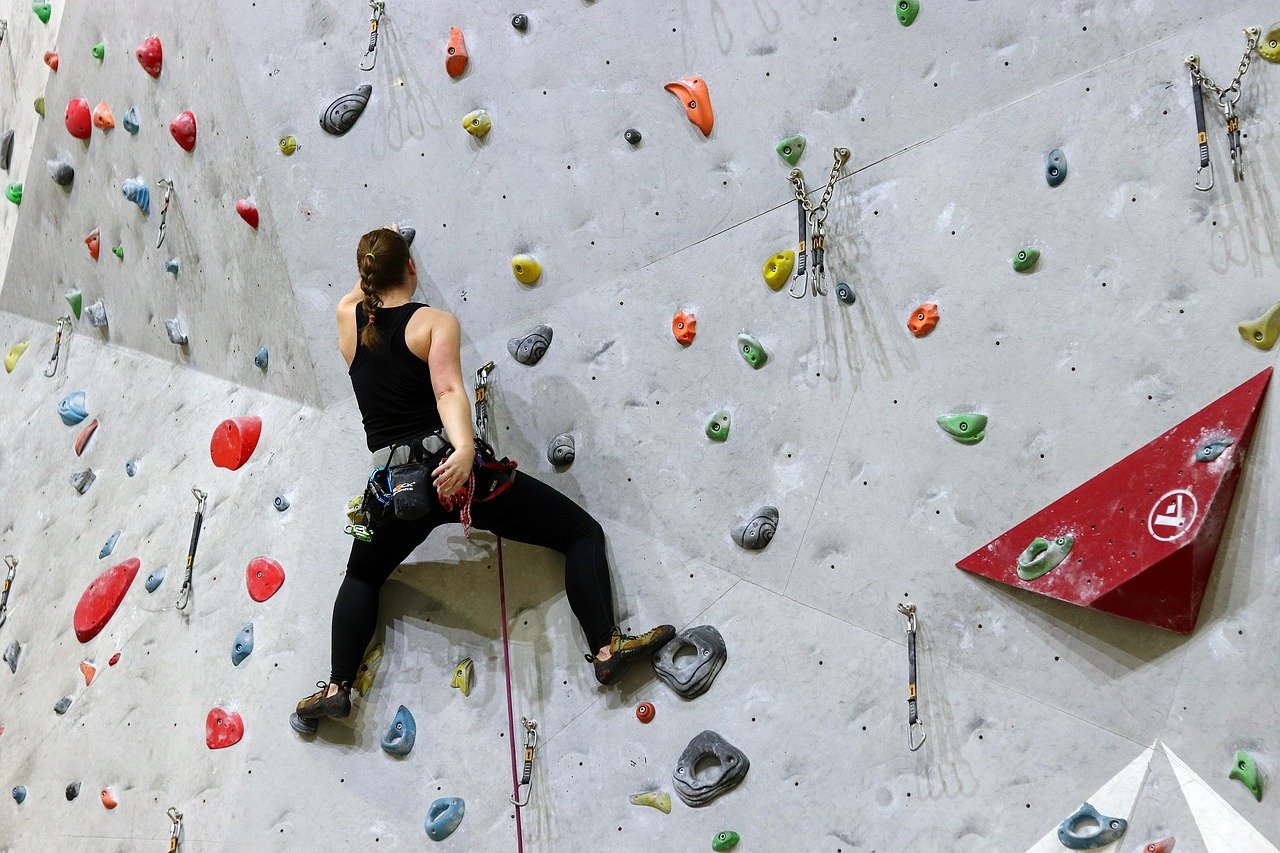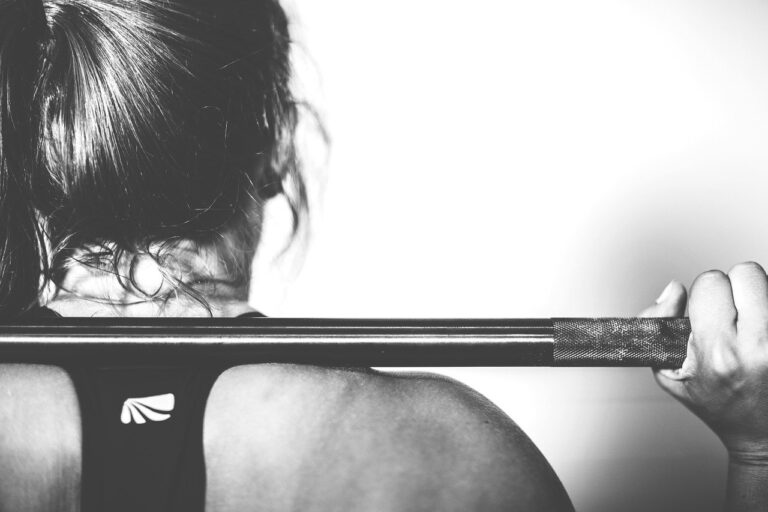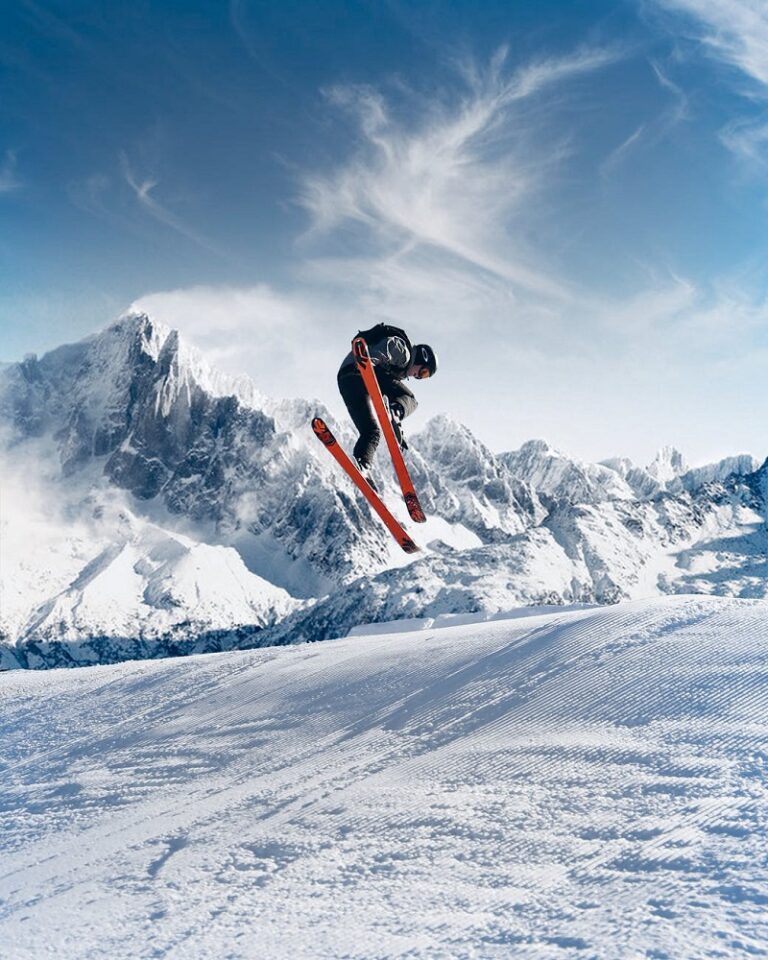Acute knee injuries in boulderers and rock climbers and how to avoid them.
What causes acute knee injuries in bouldering and rock climbing athletes?
This was the question that Dr Christoph Lutter and colleagues sought to answer in their recently published research study.
Here, we provide a summary of the main findings of the study, as well as expert tips on exercises you can incorporate into your training regime to reduce the risk of these types of injuries.
With increasing interest and participation in both rope climbing and bouldering, as well as a potential increase in knee injuries, the authors wanted to determine how these types of injuries were occurring.
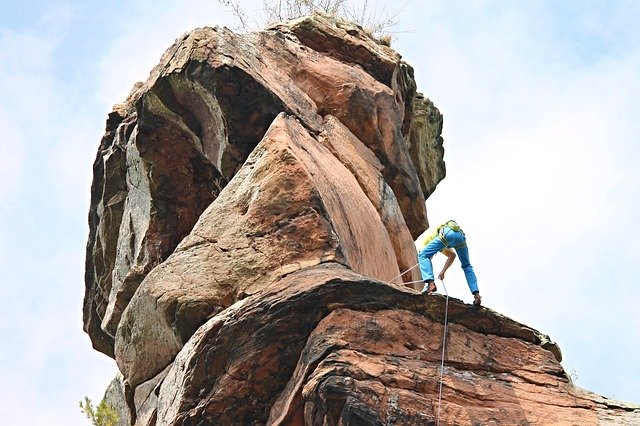
During a 4-year period, they studied all patients (non-competitive and competitive) with acute knee injuries related to indoor and outdoor rope climbing and bouldering that were treated in 2 specialized sport medicine clinics in Germany.
They examined 71 patients with a total of 77 independent knee injuries.
By asking each patient to describe their body position and activity on the given climbing route at the time of injury, 4 mechanisms of injury were identified.
These included the high step, drop knee, heel hook and uncontrolled falls to the ground.
Apart from a fall, all body positions are commonly known techniques used in climbing.
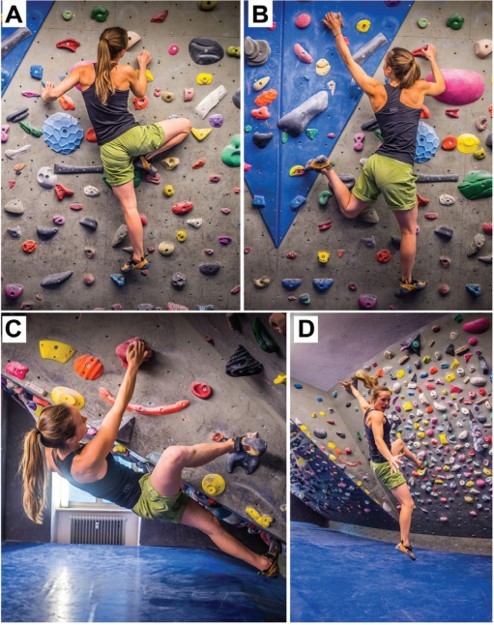
A) High step position of the right leg/knee during bouldering. While the left leg is fully unloaded, the majority of the athlete’s weight is on the right leg with a fully flexed knee. (B) Drop knee position of the left lower extremity leading to a high mechanical load on the menisci. (C) Heel hook position during bouldering (right knee). The heel is used to apply pressure onto the hold while pulling on the foot by flexing the hamstrings. In addition, the knee is rotated outwardly, applying a high load onto the knee. (D) A fall during bouldering can cause severe knee injuries, even from lower heights in cases of uncontrolled falling, insufficient ground protection, or insufficient body tension attributed to fatigue. From Lutter et al 2020.

For all types of knee injuries, indoor bouldering was the main cause (46.8%), followed by outdoor rope climbing (26%), outdoor bouldering (22.1%) and indoor rope climbing (5.2%), with most injuries (66 out of 77 injuries) occurring while the person was training.
The top 3 types of injuries in patients were medial meniscal tears (predominantly caused by the high step, drop knee and heel hook), iliotibial band sprains (caused by the heel hook) and anterior cruciate ligament (ACL) tears (caused by falls).
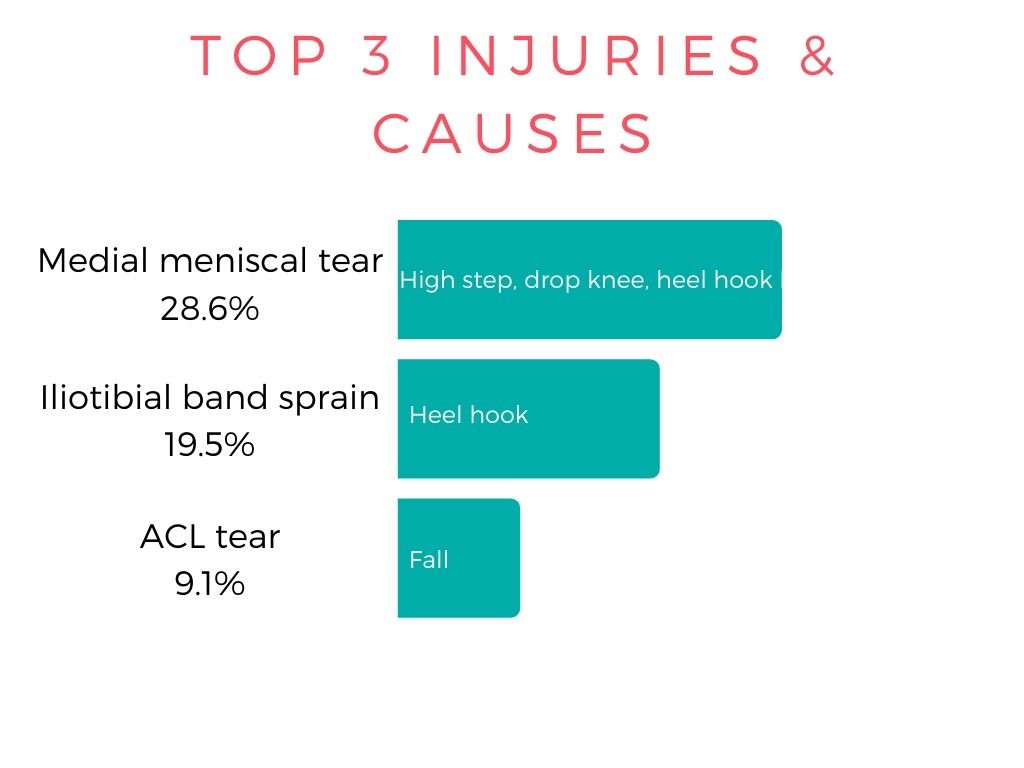
The researchers also found that high step and drop knee injuries were more common when rope climbing, while heel hook and fall injuries were more often caused by bouldering.
There was no significant difference in how the injury was caused between non-competitive and competitive athletes, although medial meniscal tears were more frequent in noncompetitive athletes.
All patients received an individualized post-traumatic injury therapy protocol and had returned to climbing and / or bouldering within 12 months.
Preventing reinjury of the knee
To prevent reinjury of the knee, the authors recommend that rope climbing should be preferred to bouldering to “avoid falls and direct impact on the knee”.
They also recommend that when bouldering, “down climbing” (a cautious decent) or a “top out” (an alternative easy decent), should take preference to jumping down.
Expert training tips
According to the authors, most climbers neglect the leg muscles during their training routine. However, active training of the knee stabilizers for improved joint control, combined with stretching techniques (eg iliotibial band), may be beneficial to decrease the risk of these types of knee injuries.
Bow Valley local, Nani Woollings, a professional physiotherapist with a Masters in Physical Therapy, coach for the Canadian Youth National Climbing Team and the Canmore competitive youth climbing team, and former competition climber, recommends the following exercises.
As with any training session, these exercises should begin with a gentle warm-up. Dosage (repetitions and sets) will depend on each individual’s ability, strength, and injury status. Stop any exercise if you have pain or if you begin to lose form – maintaining perfect technique is more important than achieving a certain number of reps. As a general rule, 2-3 sets of each exercise with 90-120 seconds between sets is ideal for building general muscle fitness.
Static Step-ups in both sideways and forward directions
This exercise simulates high-stepping as well as the “rock-over” motion used in climbing. It improves hip stability and balance, and strength in the gluteus and quadriceps muscles primarily. When these muscles are weak or inhibited, the knees are likely to receive more than their fair share of the load, leading to knee pain and injury.
Dosage: 6-8 reps/side, 2-3 sets, 2-3X weekly
Drop Knee Press
This exercise involves a combination of hip and knee rotation, simulating the drop-knee movement in climbing. In addition to improving lower body strength and stability dynamically, it reinforces the movement pattern needed to properly perform this move on the wall. Adding weight is optional.
This exercise is recommended by Dr. Jared Vagy, author of Climb Injury Free.
Dosage: 10-15 reps/side, 2-3 sets, 2-3X weekly
Stability Ball Hamstring Curls
The hamstrings are the primary muscles used in heel-hooking. They play a key role in stabilizing the knee and rotating the lower leg. Hamstring curls on a stability ball mimic the heel hook movement, while encouraging core and hip stabilization as well.
Dosage: 10-15 reps, 2-3 sets, 2-3X weekly
Gorilla Jumps (with band)
Working on dynamic stability, that is to say stability while jumping and landing, is important for preventing those knee injuries occurring due to uncontrolled falls. As an additional benefit, they will help develop the lower extremity power necessary for dynamic movement in climbing.
Dosage: 10-15 reps, 2-3 sets, 2-3X weekly.
90-90 Hinge & Lift
Achieving and maintaining good active range of motion is another essential element to injury prevention. A lack of mobility in the hips, like in a drop-knee for example, may mean that when we load the system the torque will go through the weakest point: usually the knee or the low back.
Internal and external hip rotation are crucial for climbing efficiently, but keep in mind that this is only one of many mobility exercises that you could and should do; keeping hamstrings, hip flexors, and ankles mobile and strong is also important for preventing knee injuries.
Think of it this way – injuries will typically occur to the weakest link in the chain – injury prevention (or more realistically, injury mitigation) is successful when we make all links in the chain as resilient as possible.
Dosage: 10 reps of each/side, 2-3 sets, 4-5X weekly
As always, if you have an injury, see a physiotherapist or other healthcare practitioner who can advise you on rehabilitation and optimal loading with exercise prior to starting a program.

Expert contributor
Nani Woollings, a professional physiotherapist with a Masters in Physical Therapy, coach for the Canadian Youth National Climbing Team and the Canmore competitive youth climbing team, and former competition climber.
Research study citation
Lutter, C., Tischer, T., Cooper, C., Frank, L., Hotfiel, T., Lenz, R., & Schöffl, V. (2020). Mechanisms of Acute Knee Injuries in Bouldering and Rock Climbing Athletes. The American Journal of Sports Medicine, 48(3), 730–738. https://doi.org/10.1177/0363546519899931

